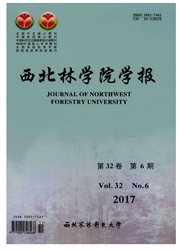

 中文摘要:
中文摘要:
以1990、1999和2010年的3期Landsat TM/ETM影像及数字高程图像(DEM)为数据源,综合利用RS、GIS技术与景观生态学的理论和研究方法,对乌鲁木齐市近20a间的景观格局变化及其各景观类型空间转化特点进行了分析。结果表明:随着时间的推移,研究区的景观格局发生了较大的变化,其建设用地和林地的增加及未利用地的减少较为明显,其他植被有减少的趋势,水体面积有所增加;城市景观类型转移变化上,5种景观类型相互之间转化频繁,其他植被和未利用地主要转化为建设用地。因地形条件的制约,城市以"T"字形轴向式扩展显著,各景观类型发生转换的空间主要位于城市的西北和东北地区。在景观类型水平上,建设用地景观的优势度增强、边界越来越复杂和聚集度呈增长;其他植被优势度下降,破碎化程度增加;水体景观形状较为规则,破碎化程度降低;未利用地破碎化程度加强,优势度和聚集程度下降。在景观水平上,城市景观整体破碎化程度增加,形状趋于复杂,景观异质性增强,表现出多样化和均匀化的发展趋势。
 英文摘要:
英文摘要:
Using three Landsat TM/ETM images of Urumqi,acquired in 1990,1999,and 2010,and DEM image,landscape pattern dynamic changes and spatial conversion features in Urumqi during last 20 years were investigated guided by by remote sensing,geographical information system and the landscape ecological theory.The results showed that,during the whole period,landscape pattern of the study area had changed a lot.The increase of construction land and forest land,the decrease of unused land were significant,other vegetations were tended to decrease.Water land increased slightly.Transformations frequently occurred among 5 landscape types.Vegetations other than forest mainly changed to construction land.Because of the limitation of topographic conditions,the city expanded significantly in " T" axial type.The space of each landscape type conversion mainly occurred in the northwest and northeast regions of the city.On the level of landscape types,landscape dominance of construction land increased,boundary was more and more complicated,and the polymerization degree increased.Other vegetation landscape dominance index decreased,fragmentation degree increased.Landscape shape of water was inerratic,fragmentation de-gree decreased.Unused land's fragmentation degree,advantage degree and aggregation degree declined.On landscape level,the whole city landscape fragmentation degree increased,landscape shape tended to be more complicated,landscape heterogeneity enhanced,indicating the city landscapes development trends to be homogenization and diversity.
 同期刊论文项目
同期刊论文项目
 同项目期刊论文
同项目期刊论文
 期刊信息
期刊信息
